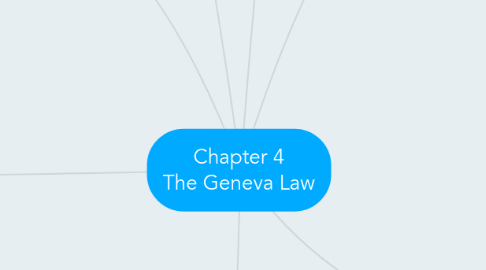
1. 4.7 Wrap-up interview
1.1. 4.7.1 Interview with Prof. Andrew Clapham
2. 4.6 The protection of individuals in non-international armed conflicts
2.1. 4.6.1 Introduction
2.1.1. Introduction
2.2. 4.6.2 Who is protected and how are individuals protected in NIACs?
2.2.1. Who is protected in NIACs?
2.2.2. MCQ (1 pt)
2.3. 4.6.3 Internment in NIACs
2.3.1. Can individuals be interned in NIACS?
2.3.2. MCQ (1 pt)
2.4. 4.6.4 Protections for the sick and wounded in NIACs
2.4.1. Explanation
2.4.1.1. Common Article 3
2.4.1.2. Article 7 of Additional Protocol II
2.4.1.3. Rules 109, 110 and 111 of the ICRC Study on Customary IHL
2.4.2. MCQ (1 pt)
3. 4.5 The protection of individuals in occupied territories
3.1. 4.5.1 Introduction
3.1.1. Introduction
3.2. 4.5.2 The notion of occupation
3.2.1. cf. 3.6
3.3. 4.5.3 The law applicable to occupation
3.3.1. The law applicable to occupation
3.3.2. MCQ (1 pt)
4. 4.4 The protection of the wounded and sick
4.1. 4.4.1 Introduction
4.1.1. Introduction
4.2. 4.4.2 Who qualifies as wounded or sick?
4.2.1. Who is wounded or sick under IHL?
4.3. 4.4.3 How are the wounded and sick protected?
4.3.1. How are wounded and sick protected?
4.3.2. MCQ (1 pt)
5. 4.3 The protection of civilians
5.1. 4.3.1 Introduction
5.1.1. Introduction
5.2. 4.3.2 Who are civilians?
5.2.1. Who are civilians under IHL?
5.2.2. MCQ (1 pt)
5.3. 4.3.3 How are civilians protected?
5.3.1. Explanation
5.3.1.1. Maintenance and re-establishment of family links
5.3.1.1.1. Article 25
5.3.1.1.2. Article 26
5.3.1.1.3. Article 36
5.3.1.1.4. Article 140(2)
5.3.1.1.5. Article 82
5.3.1.1.6. Article 107
5.3.1.1.7. Article 108
5.3.1.1.8. Article 116
5.3.1.2. Right to leave
5.3.1.2.1. Articles
5.3.1.3. Transfer and deportation of civilian population
5.3.1.3.1. Articles
5.3.1.4. Protection of women
5.3.1.4.1. Articles
5.3.1.5. Protection of children
5.3.1.5.1. Articles
5.3.1.6. Other fundamental guarantees
5.3.1.6.1. Articles
5.3.2. MCQ (1 pt)
5.4. 4.3.4 When can civilians be interned?
5.4.1. When can civilians be interned?
5.4.2. MCQ (1 pt)
5.5. 4.3.5 How are civilians protected when detained?
5.5.1. Explanation
5.5.1.1. Place of internment
5.5.1.1.1. Articles
5.5.1.2. Working conditions
5.5.1.2.1. Articles
5.5.1.3. Penal and disciplinary sanctions
5.5.1.3.1. Articles
5.5.1.4. Release
5.5.1.4.1. Articles
5.5.2. MCQ (1 pt)
6. 4.2 The protection of prisoners of war
6.1. 4.2.1 Introduction
6.2. 4.2.2 Who is entitled to POW status?
6.2.1. Explanation
6.2.1.1. Article 4 GCIII
6.2.2. The categories of people entitled to POW status
6.2.3. MCQ (1 pt)
6.2.4. Explanation
6.2.4.1. Article 4(A)(3)
6.2.4.2. Article 4(A)(6)
6.2.4.3. Article 46(1)
6.2.4.4. Article 47
6.2.4.5. Article 3
6.2.4.6. Article 75
6.2.5. MCQ (1 pt)
6.3. 4.2.3 When can POWs be interned?
6.3.1. Explanation
6.3.1.1. Article 5
6.3.1.2. Article 45
6.3.2. MCQ (1 pt)
6.4. 4.2.4 How are POWs protected?
6.4.1. How are POWs protected
6.4.2. MCQ (1 pt)
7. 4.1 Introduction
7.1. 4.1.1 Introduction
7.1.1. Overview of Chapter 4
